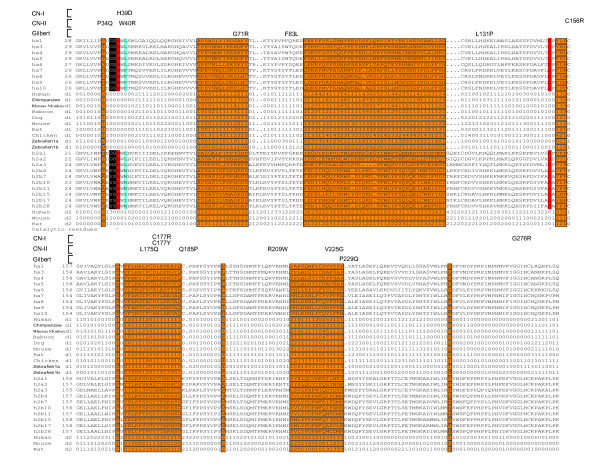Figure 7.

The acceptor-binding region of vertebrate UGT proteins. Shown is an alignment of the acceptor-binding region of the human UGT1 and UGT2 proteins. The diversity indexes (defined as KA/KS multiplied by 2) for the human, chimpanzee, rhesus monkey, baboon, dog, mouse, rat, chicken, and zebrafish UGT1 (d1) and the human, mouse, and rat UGT2 (d2) are also shown. The four hypervariable regions (with exceptions of two cysteines) and several other highly diversified residues are highlighted in orange background and are also boxed. A leucine residue (L41) close to the donor is highlighted in turquoise background. Residues predicted to interact with the donor molecule are highlighted with white letters in black background. Missense mutations in the human UGT1A1 that cause CN-I, CN-II, or Gilbert syndromes are indicated above the alignment. The two catalytic residues histidine 39 (H39) and aspartic acid 151 (D151) are highlighted in red background and with asterisks below.
